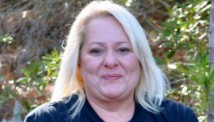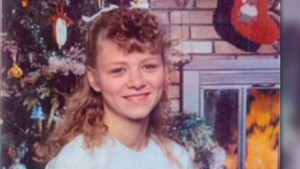Editor's note: Monica Caison is the founder of CUE Center for Missing Persons, a nonprofit organization that advocates and searches for the missing and provides support for their families.
(CNN) -- Miracles do happen. Like this week, when Amanda Berry, Georgina DeJesus and Michelle Knight escaped their captor after being missing for a decade.
It turned out they were locked away and alive the entire time.
Their fortuitous escape is like a ray of light and reminds us that sometimes good things do happen. A cry for help came out from the walls of silence, and a member of the community responded, aiding in the rescue. The selfless act of a total stranger only reinforces that the public will help when needed.
 Monica Caison
Monica Caison But their story is unusual. Many missing persons who have been missing for a long time are still not found. We should urge all communities to play an integral part in assisting law enforcement in investigations about missing persons.
We live in a world filled with powerful technology that has enabled us to communicate faster and better, yet we seem to lack the simple face-to-face meeting that must take place when searching for clues and information in any type of investigation.
The old "knock and tell" method remains an effective tool today. It must be used when searching for our missing persons. When you talk to someone in person, you can read them better by registering their expressions, gestures and other factors. Sometimes, those things could yield clues. This door-to-door technique can make the difference in finding someone in hours, days or years.
There's no doubt that trying to find missing persons requires a tremendous amount of work. Classifying cases as "runaways" or "walk-aways" does nothing to help the outcome of any given case. If anything, it could hinder and slow the process. The general public normally will not have a heightened sense of concern for those believed to have left on their own.
 Are two missing women linked to Castro?
Are two missing women linked to Castro?  Police, community at odds in Cleveland
Police, community at odds in Cleveland  Who is Ariel Castro?
Who is Ariel Castro? The sense of urgency and hitting the ground running from the start could be the difference in many missing person cases. A case can be misdiagnosed upon closing; this is when we confirm that the labeling provided a wrong direction. The word "missing" should be enough and important; the alert(s) system in place such as the Amber/silver provide an additional emergency notification seeking the public's help.
The myth of "a waiting period" to report a missing person still lingers, and many families are turned away by officials and forced to begin their journey on their own without any direction or support. Due to heavy caseloads, law enforcement officials are frequently not afforded the continuous training and education that could help them in the search for a missing person.
All too often, information is not provided to victims suffering a missing loved one in the onset, such as where to file the report and what agencies can provide support services and help with advocacy and on-the-ground services. These are all key issues that need to be addressed as we move forward to bring home those missing in our country.
Cold cases and unidentified persons need to be revisited and reopened. All cold cases need to be updated and looked at again with a keen eye on what can be done to aid in a recovery.
As we rejoice in the happy ending for the three women and their families and friends, we need to be reminded that there is still much work to be done in the world of the missing.
We need to remember that there are thousands of people who are still seeking resolution and waiting for answers concerning their loved one. As a community, we need to come together, take notice and become aware of what happens in our homes, neighborhoods, towns and cities. And we need to always remember that "every missing person is somebody's child."
Follow @CNNOpinion on Twitter.
Join us at Facebook/CNNOpinion.
{ 0 comments... read them below or add one }
Post a Comment